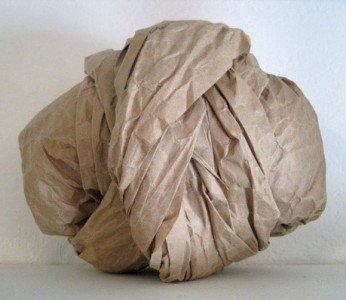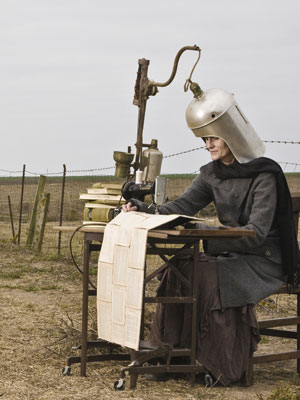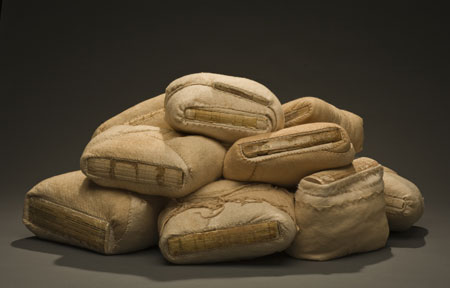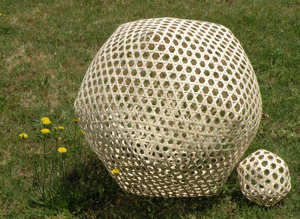 Lisa Hochstein is a Santa Cruz, California-based artist who works in collage, painting and fiber arts.
Lisa Hochstein is a Santa Cruz, California-based artist who works in collage, painting and fiber arts.
She recently curated the exhibition Earth • Science • Art for the R. Blitzer Gallery in Santa Cruz. The exhibition paired 16 scientists from the USGS Pacific Coastal & Marine Science Center with 16 Bay Area and Santa Cruz artists.
Hochstein has a BFA in painting from the University of Massachusetts, Amherst.
Whirligig: What is art?
Lisa: My answer to that depends on whether I am in the role of artist or of audience. As someone who creates objects, art making is a response I have to the world’s bumping up against my awareness. Making art feels very instinctual though I can’t completely explain why I feel drawn to this particular activity. It has always seemed a little strange to me—that awareness leads to a desire to make something. When I am in my studio, my frame of mind is one of openness and curiosity and a certain amount of discontent or unease. Each piece grows from a combination of feelings, ideas, memories, associations and formal considerations, plus elements of chance and luck that I always hope to be awake to. I regain some kind of equilibrium through my work, but it’s not just about that. I also want to be surprised by what I’m doing.
 When I’m in the role of audience, I take in someone else’s work and want it to transfer some of that initial response/art-making impulse from its maker to me. As a viewer I also look for something I recognize as much as I look to be surprised. Elegance, honesty, technical skill, originality, narrative truth and aesthetic truth are some of the touchstones for deciding whether I regard something as art or creative output, which strike me as different from each other. There is a lot of creative work that may be artistic but not what I would call art. For me, something that is awkward and raw can be art while something beautiful and harmonious can easily fall into a creative-but-not-art category. Art needs to sing.
When I’m in the role of audience, I take in someone else’s work and want it to transfer some of that initial response/art-making impulse from its maker to me. As a viewer I also look for something I recognize as much as I look to be surprised. Elegance, honesty, technical skill, originality, narrative truth and aesthetic truth are some of the touchstones for deciding whether I regard something as art or creative output, which strike me as different from each other. There is a lot of creative work that may be artistic but not what I would call art. For me, something that is awkward and raw can be art while something beautiful and harmonious can easily fall into a creative-but-not-art category. Art needs to sing.




 The start of all this polyhedra making, was a curiosity with a basketry technique, a hexagonal weave structure. It has three elements instead of the two in a basic grid that I am used to on the loom.
The start of all this polyhedra making, was a curiosity with a basketry technique, a hexagonal weave structure. It has three elements instead of the two in a basic grid that I am used to on the loom.